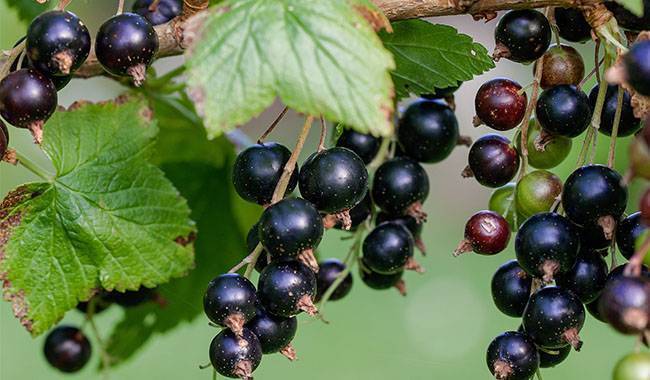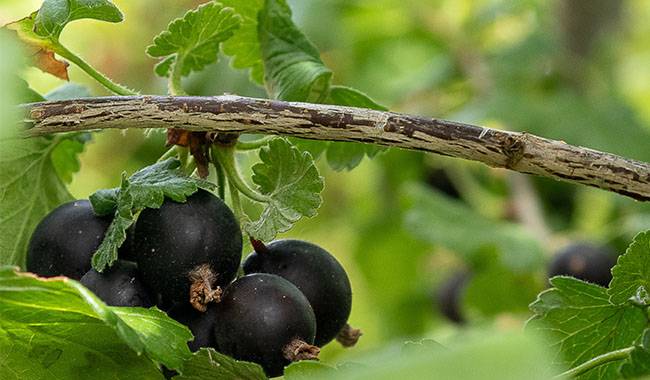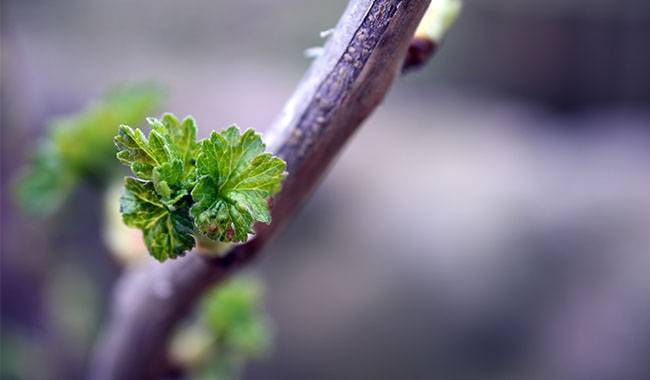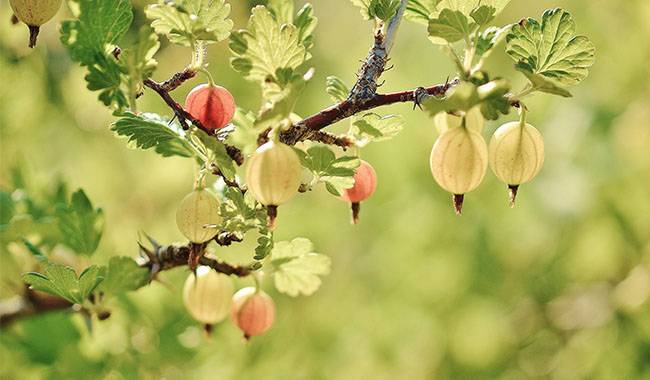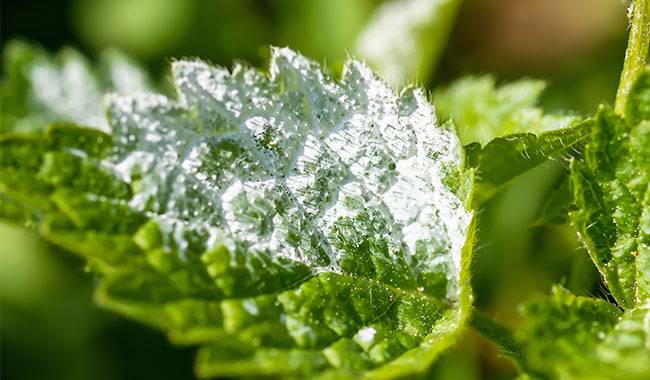
Protecting plants from various diseases occupies the vast majority of a gardener’s time during the summer. And this struggle does not always end with positive results for the plants.
One of the most serious diseases that affect Currant is considered to be American powdery mildew or Currant.
This article will tell you if the disease can be prevented and what to do if currant powdery mildew appears anyway.
IDENTIFYING CHARACTERISTICS OF POWDERY MILDEW
When the buds begin to bloom, the earliest manifestation of Currant will affected by Powdery mildew. A cobwebby white patina appears on the upper side of the young leaf plates and on the tips of the shoots, gradually growing, thickening, and acquiring a felt-like appearance, mottled with black dots. This is a fungus with spores.
As it proliferates, it migrates to the entire above-ground part of the plant. The fungus ejects viable spores that are dispersed by wind and raindrops. The first infestation is the most damaging, affecting leaves and young shoots, as well as the ovary.
If no action is taken, the development of the diseased plant is suspended, the berries fall off when growth matures, the shoots are deformed and the bush gradually takes the form of a sprayed lime solution and dies. In this case, ideal conditions are created for further infection not only of Currant but also of other fruiting shrubs in the area.
WHY DOES POWDERY MILDEW OCCUR EVERY YEAR?
During the growing season, conidia (spores) are isolated from the fungus. They are very small and light (powdery) and are easily carried by the wind over great distances and affect healthy Currant bushes and other berries (white pulp, black pulp, pink currant, etc.).
Throughout the warm period, shoots, twigs, and bushes are overinfested. Meanwhile, the plants initially appear absolutely healthy and the spores survive the winter and cause new outbreaks of infection the following spring.
The main conditions for Powdery mildew to rapidly develop and infest new bushes are alternating high humidity (no less than 60-80%) and hot, dry weather 77-86°F (25-30°C). If this fluctuation occurs during the germination of young leaves, intense fungal development and conidia formation begin.
Their incubation period varies from 5 to 7 days, depending on the temperature. If it rains during this period, the spread of the disease is practically impossible. Conidia remain on the fungus.
However, with the termination of the rainy season and the establishment of warm and comfortable weather, the moisture content of the soil evaporates optimally and the disease begins to develop intensively. Literally, 2-3 days later, the shrubs find themselves captured by Powdery mildew (covered with white fungal growth).
Combining weather conditions and the rapid infection of new shrubs by Powdery mildew, under no circumstances should plants be fed nitrogen. Nitrogen fertilization increases the proliferation of young leaves and will ensure the rapid growth of the pathogen.
PREVENTION METHODS FOR CURRANT POWDERY MILDEW
Simple agronomic techniques can help reduce the chances of Powdery mildew in Currant the following season:
- When clearing berry shrub plots in the fall, be sure to remove and burn fallen leaves.
- Prune the shrubs and shoots of the affected plants and destroy them annually.
- Be sure to work with disinfected tools.
- Keep the site clean of weeds during the growing season, as some weeds are prone to fungal diseases and thus involved in the spread of disease.
- Newly planted Currant bushes should be considered for their resistance to Powdery mildew.
- Do not overgrow the bushes when planting. There should be normal air circulation between the bushes.
- Sprinkle water in the morning so that the shrubs have time to dry out during the day. Use the traditional watering method (with a hose) and water under the bushes. In general, drip irrigation is preferable.
- When fertilizing, especially in warm, cloudy weather with high humidity, exclude nitrogen fertilizers. It can be replaced by making wood ash, phosphorus, and potassium fertilizers or full compound fertilizers.
TREAT PEBBLES WITH COPPER SULFATE OR EMULSION SOLUTION
Treat the shrubs with a copper sulfate solution every year in early spring before leafing or after flowering.
Instead of copper sulfate, milk whey solution or milk solution with iodine added can be used for annual preventive treatment of Currant (and other crops). Dairy products are only antiseptic when exposed to full sunlight.
Therefore, a lot of double-sided spraying (until the liquid runs off the leaves) must necessarily be done in clear weather at 10-11 a.m. during 1.5-2 weeks.
The solution is prepared in the following proportions: 2-3 liters of water (not more) and 5-7 drops of iodine in 1 liter of whey/milk. At lower concentrations, the solution does not work.
TREATMENT OF CURRANT TREES WITH ASH INFUSION
Some gardeners prevent Currant by treating the shrubs with ash solution – at the foliage flowering stage (before flowering). Around the end of May – beginning of June, the disease is suppressed by this treatment in combination with foliar feeding of trace elements contained in the ash.
The solution is prepared as follows: clean wood ash is diluted with water at a ratio of 1 kg of wood ash per 10 liters of water. Let it stand for 3-5 days (it can be boiled for 0.5 hours and then cooled) and stirred 1-2 times a day.
Add a few spoons of grated soap to the solution. Mix the solution thoroughly until the soap is dissolved. Strain through several layers of cloth to avoid clogging the sprayer when spraying. Spray three times every 24 hours.
CONTROL OF CURRANTPOWDERY MILDEW
Protection against CurrantPowdery mildew can be provided by chemical, biological, and folk remedies.
USE OF CHEMICAL AGENTS
Currant forms in a very short period of time for harvest. When treating shrubs with pesticides, the waiting period is up to 30 days or more. Therefore, the use of pesticides is not recommended in the control of Currant Powdery mildew.
USE OF BIOCHEMICAL SUBSTANCES
The safest way to control the disease is to use biocides. These are biological agents that do not adversely affect the health of humans, animals, or birds and, if used properly, can yield a good crop of quality berries.
The most common bio fungicide used to protect Currant from coccidia is “General Fungicide Organic Paste” (no waiting period, berries can be eaten the next day after treatment, always wash with water before use).
CURRANT’S FOLK METHOD FOR PREVENTING POWDERY MILDEW
Infusion of fresh feces kills pathogenic microorganisms. Preparation of the solution. 1 kg of fresh manure pours 10 liters of water. Soak for a day. Filter and treat the dandelions every 7-10 days until the disease symptoms disappear.
Solution of aspirin and baking soda mixture. Mix 1 tablespoon of soda + 1 aspirin tablet + 1 teaspoon of liquid soap + 1 tablespoon of any vegetable oil with 5 liters of water. Treat Currant bushes with the freshly prepared solution every 12 days throughout the vegetative period.
A decoction of dried onion bark at the rate of 200 g per 10 liters of boiling water significantly inhibited Powdery mildew. steep for 2 days. Spray before and after flowering as well as after harvesting.
It has a good disinfection effect on bulb-dried tan spores in the soil. Dried herb 30 g with flowers poured into 10 liters of boiling water. Affected for a day. After the infusion, boil for 2 hours, cool, and filter. Treat the soil under the shrubs in spring before the leaves open and in autumn before the cold weather.




